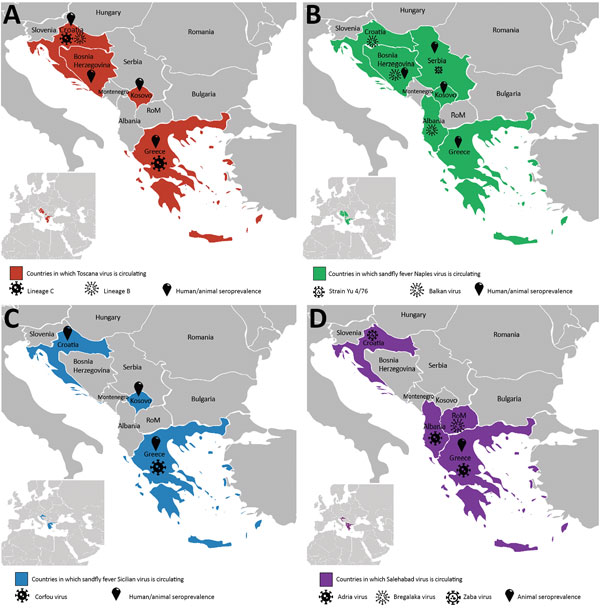Volume 24, Number 12—December 2018
Historical Review
Emergent Sand Fly–Borne Phleboviruses in the Balkan Region
Figure 2

Figure 2. Current distribution of sand fly–borne phleboviruses in the Balkan region. A) Toscana virus, B) sandfly fever Naples virus, C) sandfly fever Sicilian virus, and D) Salehabad virus. Pictograms refer to virus isolation or sequence data demonstrating the presence of the virus in that area. Human/animal seroprevalence refers to studies reporting the presence of specific antibodies against the virus mentioned in the panel.
Page created: November 19, 2018
Page updated: November 19, 2018
Page reviewed: November 19, 2018
The conclusions, findings, and opinions expressed by authors contributing to this journal do not necessarily reflect the official position of the U.S. Department of Health and Human Services, the Public Health Service, the Centers for Disease Control and Prevention, or the authors' affiliated institutions. Use of trade names is for identification only and does not imply endorsement by any of the groups named above.